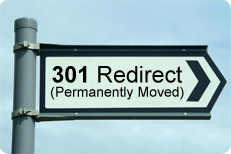This meta tags tutorial is designed to help you make the best use of your meta tags. Meta tags are still important in the majority of search engines – make sure your meta tags are configured well to maximise your search engine positioning.
Meta tags should always be placed in the head section of the HTML document between the actual <HEAD> tags, before the BODY tag. This is very important with framed pages, as a lot of webmasters tend to forget to include them on individual framed pages.
Remember, if you only use meta tags on the frameset pages, you may be missing a large number of potential visitors.
Meta tags are important. Do not underestimate their importance in today’s modern search engine algorithms.
What is the general format for meta tags?
Meta tags generally follow the format as detailed below:
<html>
<head>
<meta name=”keywords” content=”This page ….” />
<meta name=”description” content=”This page ….” />
<meta name=”robots” content=”index,follow” />
<title>…</title>
</head>
<boy>
Essential meta tags for the Search Engines
The TITLE tag is not actually a META TAG but it is the most important tag for search engines:
<title>These are my most important keywords up to approx 8 words / 64 characters</title>
The title tag is what most search engines display and what your potential visitor will see first before selecting which site to view from the list so make sure it is effective.
Using the META description attribute, you can add your own description for your pages:
<META NAME=”description” CONTENT=”Sony Digital Cameras Online – Supplier of Sony Digital Cameras at the Lowest prices! Cornwall, Plymouth and Devon.” />
Use a minimum of 85 characters and up to a maximum of 200 characters, and make sure that you include several of your keywords in the description.
Keywords are very important since it is through them that people will find your site.
<META NAME=”keywords” CONTENT=”digital,camera,cameras,supplier,devon,plymouth,cornwall,sony” />
Use a minimum of 150 characters (20 keywords) up to around 600 characters (90 keywords) and put the most important keywords as close to the top of your page as possible. By the way, don’t think you can spike the keywords by using the same word repeated over and over, as most search engines have refined their spiders to ignore such spam. Instead, use each keyword only once (include both singular and plural forms if appropriate).
Tell the robots which pages to index – and which not
<META NAME=”robots” CONTENT=”index,follow” />
The default for the robot attribute is “all”. This would allow all of the files to be indexed. “None” would tell the spider not to index any files, and not to follow the hyperlinks on the page to other pages. “Index” indicates that this page may be indexed by the spider, while “follow” would mean that the spider is free to follow the links from this page to other pages. However, “noindex” would tell the spider not to index this page, but would allow it to follow the links and index those pages. “nofollow” would allow the page itself to be indexed, but the links could not be followed. As you can see, the robots attribute can be very useful.
Optional Meta Tags
You can also specify the distribution of your pages for indexing. It can be global, or restricted to certain countries.
<META NAME=”distribution” CONTENT=”Global” />
To help the robots classify your site, you have the possibility of assigning a rating for your pages:
<META NAME=”rating” CONTENT=”General” />
If you are making revisions to your site or updating frequently, it is helpful to ask the robots to revisit your site after a certain time. It is recommended that you use a time frame between 3 weeks to 6 months.
<META NAME=”revisit after” CONTENT=”30days” />
Meta Tag Generator
Now you are armed with the knowledge it is time to build your new meta tags with our meta tag generator, then simply incorporate them into your site and within the time the engines will pick up your new tags.
Visit the Meta Tag Generator

 The much requested (and needed) feature is now live for all parked domain names. The 301 redirect is the SEO friendly redirect which is recommended by all major search engines as well as openly by Google.
The much requested (and needed) feature is now live for all parked domain names. The 301 redirect is the SEO friendly redirect which is recommended by all major search engines as well as openly by Google. It is quite amazing how often this question comes up.. So, to address a very very common question here is the simple answer…
It is quite amazing how often this question comes up.. So, to address a very very common question here is the simple answer…